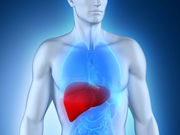Change from supine to prone position linked to decrease in hepatic blood flow, cardiac output
THURSDAY, March 17, 2016 (HealthDay News) — Prone positioning is associated with significant changes in hepatocellular function and cardiac output in healthy volunteers, according to research published online March 7 in Anaesthesia.
Prompted by an incident of significant hepatic dysfunction after surgery in a prone position, Marc Chikhani, from the University of Nottingham in the United Kingdom, and colleagues examined changes in hepatic blood flow and cardiac output during prone positioning on surgical bolsters in 10 awake volunteers. Cardiac output was measured using the noninvasive Peñáz technique, while hepatic blood flow was assessed using the surrogate marker of plasma disappearance rate of indocyanine green as well as serum hepatic enzyme assays. After one hour in supine, prone, and returned supine positions, measurements were made.
The researchers found that the disappearance rate of indocyanine green changed significantly, with a decrease from 31.1 percent per minute in the supine position to 19.6 percent per minute in the prone position; on return to the supine position there was an increase to 24.6 percent per minute. A significant reduction was also seen in cardiac output when changing from the supine to the prone position.
“We demonstrated an acute and reversible change in both hepatocellular function and cardiac output associated with the prone position,” the authors write.
Copyright © 2016 HealthDay. All rights reserved.








